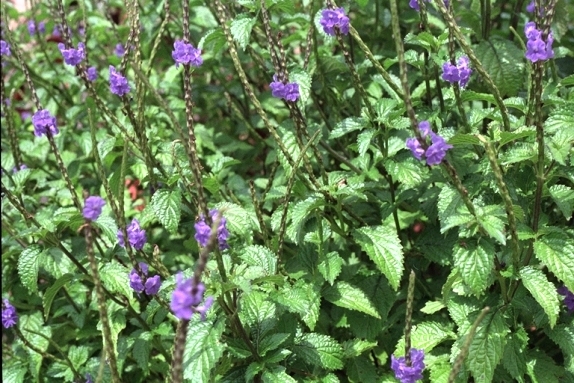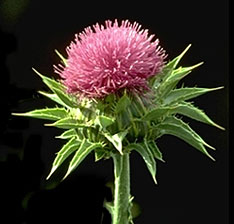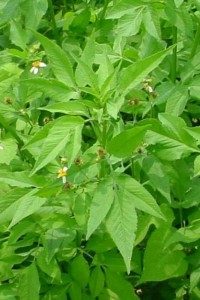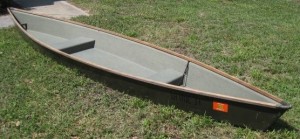Do you like mushrooms but want to avoid some of dangers that come with fungi foraging? Then there is a subtle solution: Blue Porterweed.
Found in flower gardens around the world and native to Florida the Blue Porterweed earned its name as a source for tea that tasted like porter beer. Someone had the fermenting idea to add yeast and sugar to a lot of tea and get a brew that tastes similar to porter beer, hence the name. The flower garden variety usually grows up and the local native grows horizontally. The blue flowers, raw, have a subtle flavor of mushrooms. You can read more about the Blue Porterweed here. Oh, and how did porter beer get its name? The same way porter steak did. Porters — baggage handles in old central London — worked all hours and needed quick food. Shops set up to meet that need and out of them came several dishes and named items.
The Mail brought a letter that said in part: “I’ve enjoyed reading articles on your website and just finished, from video one, number 68… I’ve forage some cleaver, chickweed, lactuca and berries. I want to forage more, so badly, but I admit, videos like 68, scared the hell out of me…. To make matters worse, my father, nervous about the concept of foraging, tells me a recent story he read where a foraging expert took out a group, they foraged what he said, and they all died from what they ate! So you can imagine my trepidation.”
I do recall a story about someone who was not an expert, or even an amateur, getting a few people ill. Two years ago 18 mushroom hunters in Italy died in one week, and not one from eating mushrooms. They fell off cliffs or got loss. Still, not a good record. At least two men were sickened by mushrooms in 2011 in North America and perhaps saved by a drug based on a herbal treatment for such things, milk thistle. The plant has a history of helping sick livers. In these two cases patients who might have needed liver transplants didn’t. This I know: If someone ever slips a mushroom I think is a bad one I will raid the health food store of milk thistle. To read the entire milk thistle story click here.
As for getting ill from foraging, statistically you have a greater chance dying from lightning. Most plant poisonings are children trying toxic ornamentals in their own yard. The next largest group is children trying toxic ornamentals in their neighbor’s yard. On the herbaceous side a woman died from foraging in 2010, a man in the mid-1990, a man and a boy in ’75. The boy didn’t eat a toxic plant but made a whistle out of one. More folks die from mushroom poisoning but they’re usually immigrants who mistake some toxic western North American mushrooms for some edible Asian ones. If you avoid mushroom and members of the hemlock family (poison hemlock and water hemlock) your chances of dying from foraging are extremely small. As one doctor told me they can save you from almost any plant poisoning. The key is to get your stomach pumped out within an hour, preferably 40 minutes. That is the golden window. Forty minutes. Better still, just don’t eat any toxic plants. To see the deadly water hemlock, and an edible confused for it, click here.
Identifying wild plants is not difficult. You can tell the difference between a cat and a fox, a fox and a dog. Plants are no different. What is far more likely than you being made ill by a plant is being ill by the polluted ground or water the plant is in. By study you can virtually eliminate getting poisoned by a plant. Being poisoned by pollution is far more difficult to protect yourself from. I know the thought of eating a wild plant is scary, but what I find far more scary is not knowing the quality of the soil and water.
One of the reasons to forage for wild food is to get better nutrition for less cost than agricultural crops or if you’re an herbalist better medicinal materials (For example I never buy lycopene. I use use the fresh arils of the and save at least a dollar a day.) Wild plants are in constant competition with their pests, which you can define as bugs and fungus or even lack of water, sun or fertilizer. The plants fight back with antioxidants, polyphenols and the like. Often a wild plant will pack more nutritional punch than its cultivated counterpart. We know this also extends to organic produce, or at least tomatoes. A recent University of Barcelona study shows that organic tomatoes have higher levels of antioxidants than non-organic ones. In our own back yard a species used as a cooked green, Bidens Alba or Bidens Piloso, has twice as much nutrition as spinach but not the oxalates.
Food is where the water is. It makes no difference whether that water is fresh or salt. The flora and fauna will change but food is where the water is. How to get on that water is a different issue. Getting wet while getting food is not a huge issue in the good ol’ summer time. It’s another matter in chilblain winter. Kayaks are light and maneuverable but can’t carry much and don’t lend themselves to leaning for that choice plant. A small canoe is good but can be tippy, and a big canoe, while stable, can be heavy. This is said with some experience. I have a 12-foot kayak and an 18-foot canoe. Catch a big fish in the kayak and it’s in your lap. What little storage space there is for wild edibles is a rocky twist behind you in the stern. My huge canoe is great for a month in the wilderness and can hold a lot of food. But it is hard to navigate in small places and at 85 pounds it’s a bit for one man to portage to and fro. Lately I’ve been trying out a pirogue (said PEE-row or PEE-rog.) Pirogues are Cajun flat-bottom canoes with angled, low sides. Small, stable, easy to maneuver, and light they also have a shallow draft. They are inexpensive, far less than canoes or kayaks. Pirogues are for ponds, slow streams, and shallow marshes, exactly where a forager and some fishermen go. The one on the left is rated for two adults but they had better weight no more than 150 pounds apiece. This particular pirogue easily holds the paddler, a cooler, tackle box and a dog in front. Green Deane is raiding local lakes with it.
Class Schedule: I swing down to the southern end of the state this weekend, add a new location on the 22nd, and I’m still planning a teaching trip up to the Carolinas. To sign up for any class below, click here.
Saturday, July 14th, Bayshore Live Oak Park, 23157 Bayshore Rd., Port Charlotte, FL 33980. 9 a.m. Please read the directions below carefully. We meet at the west end of the park, not the fishing pier.
Sunday, July 15th, Dreher Park, 1310 Southern Blvd., West Palm Beach, 33405, 9 a.m.
Saturday, July 21st, Mead Garden, 1500 S. Denning Dr., Winter Park, FL 32789. 9 a.m.
Sunday, July 22nd, Lake Alfred, Florida. Site TBA. 9 a.m.
Friday, August 10th, Jervey Gantt Recreation Complex, 2390 SE 36th Ave., Ocala, FL, 34471, 9 a.m.
Saturday, August 11th, Boulware Springs Park, 7902 S. E. 15th St., Gainesville, 32601. 9 a.m.
Sunday, August 12th, Florida State College, 11901 Beach Blvd., Jacksonville, FL, 32246 9 a.m.
To donate to the Green Deane Newsletter click here.






I tried eating Bidens a number of times, but found the taste a bit strong for my palate. Pigweed, however, turned out to be delightful. Thank you for your newsletter, it is enjoyable.
Burton
Dear Green Dean,
Wow! I have so many of these plants in my garden…thought they were weeds! Thank you for sharing your knowledge with us! As usual your newsletter is wonderful!
Many thanks,
Lillian
Australia
currently in northern territory, blue porterweed is an invasive and very obvious on the trail. called snakeweed here, for its snaking curves, or maybe because it does something to snakes.
a few more links to australian plants of interest, continuing with bush tucker info here
http://www.anbg.gov.au/gardens/visiting/exploring/walks/aboriginal-trail/index.html
aboriginal trail at austrlain nat bg in canberra, bush tucker etc
http://www.anbg.gov.au/gardens/visiting/exploring/walks/aboriginal-trail/index.html
darwin area plant pdfs
http://www.nretas.nt.gov.au/plants-and-animals/plants_herbarium/darwin_flora_online
wikipedia flora of nt
http://en.wikipedia.org/wiki/Category:Flora_of_the_Northern_Territory
top end native plants society
http://www.topendnativeplants.org.au/links.php
anpsa links
http://asgap.org.au/links.html
how is the pirogue working out? have you tried an Adirondack guide boat for foraging? http://www.secretwater.com/index.html Seems like it could work well. Thanks for building & maintaining such a nice site!
Thanks… while I do some personal foraging on water I don’t teach classes there because it is actually a limited monoculture that doesn’t change for hundreds of miles.